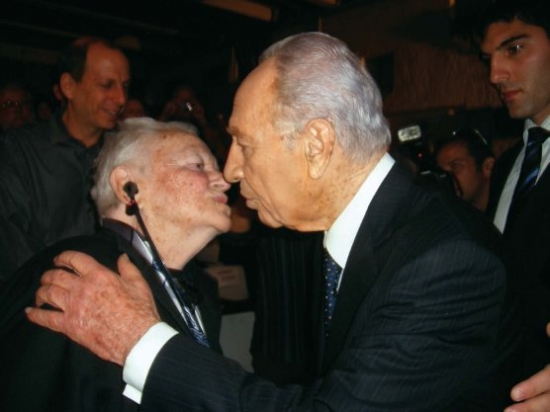
Israel president, Shimon Peres greeting Surika Braverman at Givat Haviva
Surika Braverman attends Givat Haviva Anniversaries
Photos and text by Lydia Aisenberg
During the month of November, ninety-year-old Surika Braverman twice made the long journey from her Galilean kibbutz of Shamir to Givat Haviva.
Long journeys, both physical and emotional, are nothing new to the sprightly kibbutznik and former parachutist who trained alongside Israeli heroines of the 1940s, Hannah Senesh and Haviva Reik (after whom Givat Haviva is named).
Within the space of ten days, Surika Braverman, accompanied by daughter Hagit Ori-Camaroon from Kibbutz Hazorea, graced Givat Haviva with her magnetic presence. The first occasion was for the 60th anniversary of the Givat Haviva Educational Center and the unveiling of a memorial to Haviva Reik, captured by Ukrainian soldiers near her birthplace of Banska Bystrica in Slovakia and murdered along with 250 Jews by the Nazis and their henchmen.
After unveiling the Givat Haviva central lawn memorial to her close friend and fellow parachutist Haviva Reik, the Galilean Hashomer Hatzair movement kibbutz member gave an impassioned speech tracing the actions of the more than thirty fellow Jews from Mandatory Palestine trained as parachutists by the British, and of the seven who did not return from extremely dangerous missions to save Jews in Europe and join in the Allied fight against the Nazis.
Surika Braverman and Haviva Reik, who settled at Kibbutz Ma'anit after making aliyah from her native Slovakia, were both members of the Palmach and became very close friends. The two women were totally dedicated to the ideals of their movement, Hashomer Hatzair, and the Yad Yaari Research and Documentation Center at Givat Haviva preserves and promotes the heritage of Hashomer Hatzair that Haviva Reik and Surika Braverman espoused.
Yad Yaari's extensive archives are a home away from home for youth in present times who continue to believe in and work toward the goals of peace, social solidarity and advancement. These goals are reflected in the kibbutz ideals and legacy that became a way of life for Haviva Reik in her short life, and a continued way of life and set of ideals Surika Braverman passionately adheres to until this day.
Prior to unveiling the memorial to Haviva Reik designed by Hilik Arad, Surika Braverman stood alongside three young members of Hashomer Hatzair, who were proudly wearing blue movement shirts and with many more of their similarly dressed peers in the audience. The Israeli flag and that of Hashomer Hatzair flapped gently in the wind.
Addressing the audience of Israelis, including Minister for Minority Affairs, Avishay Braverman (no relation) and overseas guests, Surika Braverman spoke of Haviva Reik and the other comrades-in-arms who set out on perilous missions to organize resistance, save Jews and also reorganize the Zionist movements.
"Haviva went on a dangerous mission after she persuaded a commanding officer to change his mind and let her join fellow parachutists heading for Slovakia," Surika Braverman said.
"She managed to get a lift on an American supply plane and really thought that she was lucky – a stroke of luck that she paid for with her life," she recounted.
"I pleaded with Haviva not to go, tried to convince her to return home but she wouldn't listen. She said that someone had to represent Hashomer Hatzair and it couldn't be that one of those going wasn't from our movement."
Before setting out on that mission, Haviva Reik had become entangled with fellow members at Kibbutz Ma'anit. Involved with the son of wealthy landowners in Zichron Yaacov, her kibbutz comrades gave her the cold shoulder – regarding such a family to be 'capitalist' and not acceptable as a partner for one of their own.
She was given an ultimatum: either him or us. She went to stay at the Hashomer Hatzair's Kibbutz Shamir – the home of Surika Braverman - to think things over.
Speaking about herself, Surika admitted she was too afraid to jump when the time came and was the last person to see Haviva Reik before she parachuted into Slovakia. Surika, however, did reach Europe to play her role in the Resistance, "but landed on the ground in a small plane."
The second commemorative ceremony Surika Braverman attended honoring the seven parachutists who perished was held some ten days later at Moreshet, the Mordechai Anielevich Memorial Holocaust Study and Research Center at Givat Haviva.
Hundreds of IDF soldiers, educators and high school pupils, and members of the fallen paratroopers’ families joined President Peres, members of the Knesset and members of Kibbutz Sdot Yam and Kibbutz Ma'anit, the adopted homes of Hannah Senesh and Haviva Reik, for an emotional gathering on campus.
President Peres lit a remembrance candle in honor of Haviva Reik as did members of the families of parachutists who perished in action. He praised the bravery of all those who rose up in defiance of the Nazis who "stood alone against a monstrously menacing force of evil." They, Haviva Reik, Hannah Senesh and their comrades, as well as the 1, 500,000 Jewish soldiers who fought with the Allied Forces, had left an unprecedented legacy for the Israel Armed Forces, particularly the paratroopers.
Surika Braverman spoke of her parachuting comrades in arms as being "simple people who believed in what they were doing for their people and the Zionist, socialist and political movements they belonged to."
A much sought-after speaker, Surika joked that she is still doing army reserve duty twice a month, addressing IDF soldiers and Israeli Air Force personnel from all over Israel.
When one of her young admirers wished the diminutive nonagenarian that she lives fruitfully until 120, Surika Braverman, who possesses a phenomenal memory and is quick-witted with a deep sense of humor, answered: "G-d forbid!"
Established in the early 60s for collecting testimonies of concentration camp survivors and resistance fighters from the ghettos, Moreshet has developed into a leading research and education center for the study of the Holocaust. It also specializes in the place of youth, especially graduates of the youth movements, in the Resistance against the Nazis in all places. Another of the central elements of Moreshet is the focus on women fighters in every arena in which struggle was possible.
"Among the many related topics we deal with is the contribution of women in actual active fighting in the ghettoes and the forests, and their role in the underground units," explained Yonat Rotbein, Director of Moreshet Educational Programs and the daughter of resistance fighter and Moreshet co-founder Ruska Korczak.
"The stories of the parachutists from Israel who volunteered for rescue missions, some of whom fell in the line of duty, as well as young women of the Hagana who undertook dangerous missions in the framework of the illegal immigration to Israel, are educational lessons of the first order, powerful and significant."
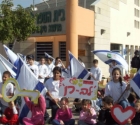 LEV-RAN SCHOOL: A LOVE STORY (new)
LEV-RAN SCHOOL: A LOVE STORY (new)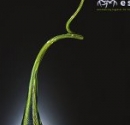 DEAR EDITOR 154
DEAR EDITOR 154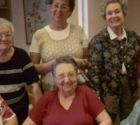 KNITTING CLUBS: TEL AVIV'S KNITTING & CROCHET SOCIAL CIRCLE
KNITTING CLUBS: TEL AVIV'S KNITTING & CROCHET SOCIAL CIRCLE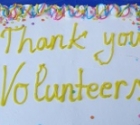 A new website in English - on Volunteering - Launched in Israel
A new website in English - on Volunteering - Launched in Israel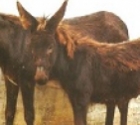 Help Needed for Abused Horses and Donkeys
Help Needed for Abused Horses and Donkeys Heather's Heseg
Heather's Heseg Lydia Aisenberg
Lydia Aisenberg